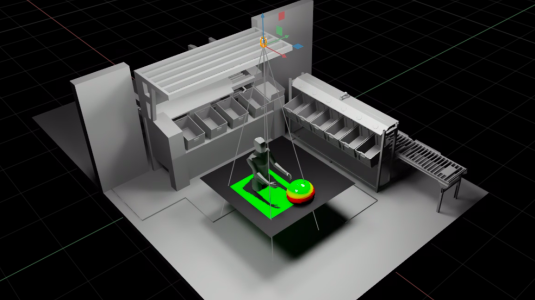The Amazon Web Services (AWS) Center for Quantum Computing (CQC) is a multi-disciplinary team of theoretical and experimental physicists, materials scientists, and hardware and software engineers on a mission to develop a fault-tolerant quantum computer. Throughout your internship journey, you'll have access to unparalleled resources, including state-of-the-art computing infrastructure, cutting-edge research papers, and mentorship from industry luminaries. This immersive experience will not only sharpen your technical skills but also cultivate your ability to think critically, communicate effectively, and thrive in a fast-paced, innovative environment where bold ideas are celebrated. Join us at the forefront of applied science, where your contributions will shape the future of Quantum Computing and propel humanity forward. Seize this extraordinary opportunity to learn, grow, and leave an indelible mark on the world of technology. Amazon has positions available for Quantum Research Science and Applied Science Internships in Santa Clara, CA and Pasadena, CA. We are particularly interested in candidates with expertise in any of the following areas: superconducting qubits, cavity/circuit QED, quantum optics, open quantum systems, superconductivity, electromagnetic simulations of superconducting circuits, microwave engineering, benchmarking, quantum error correction, etc. In this role, you will work alongside global experts to develop and implement novel, scalable solutions that advance the state-of-the-art in the areas of quantum computing. You will tackle challenging, groundbreaking research problems, work with leading edge technology, focus on highly targeted customer use-cases, and launch products that solve problems for Amazon customers. The ideal candidate should possess the ability to work collaboratively with diverse groups and cross-functional teams to solve complex business problems. A successful candidate will be a self-starter, comfortable with ambiguity, with strong attention to detail and the ability to thrive in a fast-paced, ever-changing environment. About the team Diverse Experiences AWS values diverse experiences. Even if you do not meet all of the qualifications and skills listed in the job description, we encourage candidates to apply. If your career is just starting, hasn’t followed a traditional path, or includes alternative experiences, don’t let it stop you from applying. Why AWS? Amazon Web Services (AWS) is the world’s most comprehensive and broadly adopted cloud platform. We pioneered cloud computing and never stopped innovating — that’s why customers from the most successful startups to Global 500 companies trust our robust suite of products and services to power their businesses. Inclusive Team Culture Here at AWS, it’s in our nature to learn and be curious. Our employee-led affinity groups foster a culture of inclusion that empower us to be proud of our differences. Ongoing events and learning experiences, including our Conversations on Race and Ethnicity (CORE) and AmazeCon (gender diversity) conferences, inspire us to never stop embracing our uniqueness. Mentorship & Career Growth We’re continuously raising our performance bar as we strive to become Earth’s Best Employer. That’s why you’ll find endless knowledge-sharing, mentorship and other career-advancing resources here to help you develop into a better-rounded professional. Work/Life Balance We value work-life harmony. Achieving success at work should never come at the expense of sacrifices at home, which is why we strive for flexibility as part of our working culture. When we feel supported in the workplace and at home, there’s nothing we can’t achieve in the cloud. Hybrid Work We value innovation and recognize this sometimes requires uninterrupted time to focus on a build. We also value in-person collaboration and time spent face-to-face. Our team affords employees options to work in the office every day or in a flexible, hybrid work model near one of our U.S. Amazon offices.
















